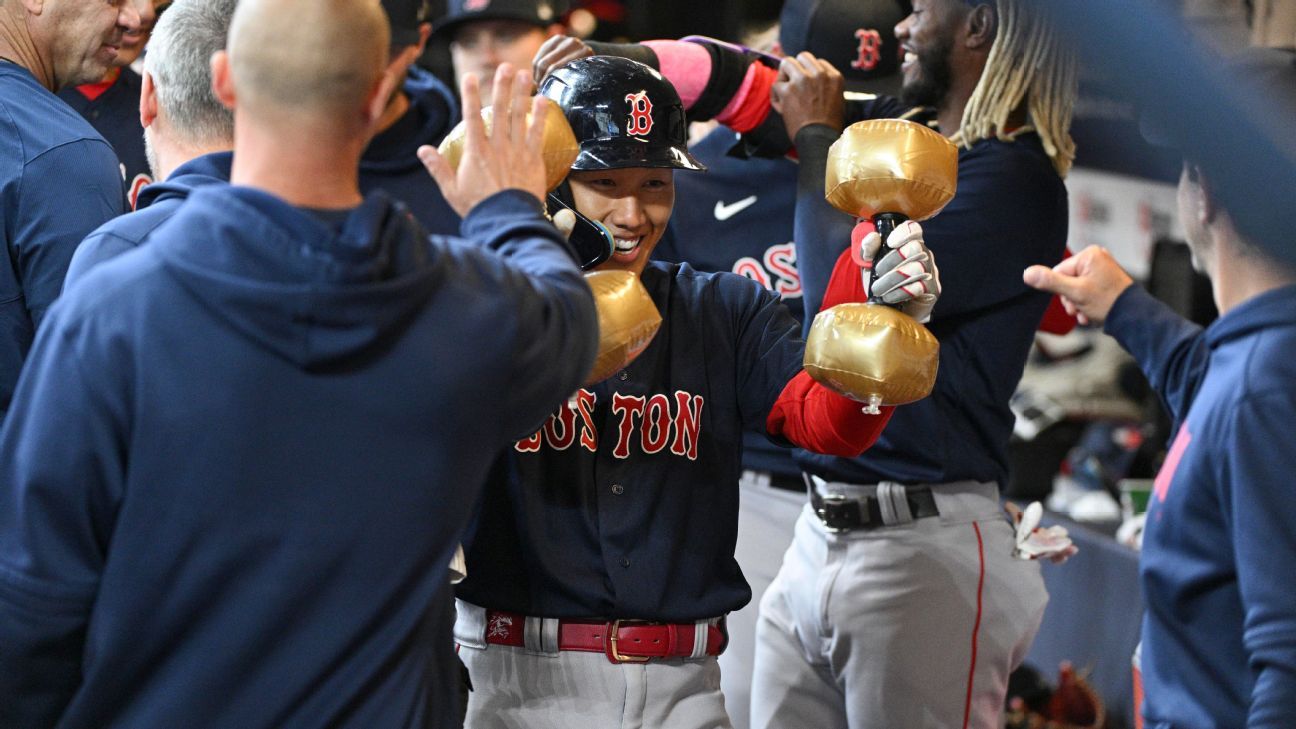It is impossible to say, at this point, whether Tiger Woods still has a chance to break Jack Nicklaus‘ record of 18 major championship victories.
It’s unlikely if you’re assessing it pragmatically. He is 46 years old, he walks with a noticeable limp from his rebuilt right leg, he has a surgically-fused spine and there are times when he cannot resist using a club as if it were a cane, bracing himself as he gingerly navigates the uneven terrain of a golf course.
But what is clear, after watching the 15-time major champion this week at the Masters, is he is going to keep trying. He is willing to endure whatever pain the future has in store, just to keep trying. And while no one knows for certain what truly motivates him at this point in his life, the twilight of Tiger Woods’ career seems to have little to do with ambition or legacy. He is instead carrying on, for one final act, because of something that mostly eluded him throughout his career.
He is — at long last — having fun.
It feels like a strange thing to write about arguably the most ruthless competitor the sport has ever seen. At the height of Woods’ powers, it felt like he would go an entire week at a major and barely make eye contact with anyone. He lived in his own private universe, singularly driven, determined to never show even a hint of vulnerability. But surviving a car crash a little more than a year ago, one that nearly cost him his right leg, seems to have inspired Woods to view whatever golf he has left in a different light.
“Thankful,” Woods said Sunday night, smiling when asked what his biggest takeaway would be from his week. “I keep saying it, but I am. I really am. I truly am.”
There were plenty of times last week when he grimaced, a handful of times when he cursed and even a couple of times when it looked like he wanted to snap a club. The fire to compete still burns, and likely always will. That was — in its own way — comforting. He isn’t content just showing up as a ceremonial golfer, and believes he still has a chance to conjure some magic.
“He doesn’t want to play to play,” said Fred Couples, one of Woods’ closest friends. “He can play at home. He can enjoy his kids, play with them every single day and have the time of his life.”
But Tiger also did things he’s never done when chasing a major championship: He played a practice round with his son, Charlie, prior to the week. He goofed off on a group text with Justin Thomas and Couples. He acknowledged the crowd between holes. He chatted genially with his playing partners. He even chuckled when he answered reporters’ questions after each round. Absent were the icy glares, the thousand-yard stares. Even in the heat of competition, he couldn’t resist smiling.
“It’s been a tough road, and one that I’m very thankful to have the opportunity to be able to grind through it,” Woods said. “A lot of different things could have happened, but 14 months, I’m able to tee it up and play in the Masters. … This tournament has meant so much to me and my family.”
When he hobbled toward the 16th green on Sunday, the spot where he took control of the 2019 Masters with a thrilling birdie, you could not tell from the look on his face that he was headed to a 47th-place finish, his lowest as a pro at the Masters. Woods started grinning as the patrons rose to their feet to shower him with affection, he and Jon Rahm taking their time to get to the green. CBS cued up a replay of Woods’ dramatic chip-in from 2005, but for the first time, a brief detour into the past, even if it meant seeing Woods at his best, felt less interesting than the present.
Woods could not stop smiling as the roar began to swell. He tipped his cap several times, looking almost sheepish as he repaired his ball mark. When he ran his birdie putt just past the hole, he responded not with disgust but with bemusement, waving to the crowd again after he tapped in for par. It was a version of Tiger Woods the 16th hole at Augusta National had never seen before, and there was something special in that too.
“It’s really cool,” Rahm said. “It was really great because nobody cared about me, so I was just watching him play. It was one more spectator.”
As Woods and Rahm were finishing their final round, Scottie Scheffler was setting out on his coronation. Woods’ influence on Scheffler couldn’t be missed, even as he was running away with the tournament.
“I played Tiger’s irons, wore his shoes, wore his shirt this week,” the 25-year-old first-time major winner said. “Tiger on the golf course is just ridiculous. He’s done so much for the game of golf. We’re so glad to have him back out here.”
No one, not even Tiger Woods, knows what kind of golf we’ll see from him going forward. He said after his round that he plans to play in The Open Championship in July at The Old Course in St. Andrews.
“That is something near and dear to my heart,” Woods said. “I’ve won two Opens there. It’s the home of golf and it’s my favorite course in the world. I will be there for that one.”
Beyond that, he made no commitments other than he vowed to strengthen his leg. He was going to approach his golfing future one ice bath at a time. He seems aware, now more than ever, that he will always be a vessel for so many people’s hopes, that he represents something bigger than himself every time he tees up a golf ball at a major championship. But it feels fair to say that Tiger Woods is more at peace with that burden than he’s ever been.
He does not need to dominate the world of golf in order to be happy, or to feel complete. Not anymore. But he would like to keep playing anyway. He wants to savor whatever he has left, and watching him limp his way around Augusta this weekend, shaping shots, trickling in putts and grinning like he was grateful just to be walking again, you couldn’t help but want the same.





